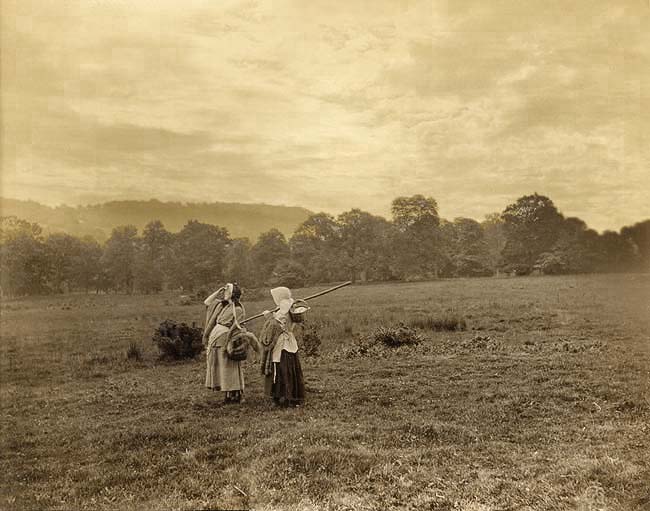|
Henry Peach Robinson was one of the originators of photomontage, a technique he called “combination printing.” Trained as a painter, he exhibited his most famous photograph, “Fading Away,” in 1858. This was a deathbed scene of a young woman, made from combining five separate negatives. Robinson published eleven books on photography and numerous magazine articles. The journal Photo Era memorialized him by saying “In England and on the continent, for nearly half a century (1857 to 1900) no single influence has been greater than his in shaping the progress of pictorial work…” In a more recent appraisal, the photographic historian Robert A. Sobieszek called Robinson “perhaps the most influential voice in nineteenth century photography. No other photographer so consistently produced major works of art, was bestowed with so many commendations and medals, and was so much a proselytizer of a coherent theory of photographic art.”
There were technical reasons for producing images from multiple negatives; the materials in use during most of the nineteenth century could not record detail in the sky of a landscape without underexposing the rest of the picture, and it could be difficult to keep all parts of a large image such as the one shown in focus at the same time. For figures in a landscape, a subject favored by Robinson, there were other advantages to photographing models in the studio: “The light is more unmanageable out of doors,” he wrote, “and the difficulty arising from the effect of wind on the dress is very serious.”
But Robinson’s influential book Pictorial Effect in Photography (1869) contained only eight pages of instructions on combination printing — the rest of its 199 pages is filled with lessons on composition and lighting, mostly based on the works of well-known painters. Even in the few pages devoted to technical instructions, Robinson issues a stern aesthetic warning:
It is true that combination printing, allowing, as it does, much greater liberty to the photographer, and much greater facilities for representing the truth of nature, also admits, from these very facts, of a wide latitude for abuse; but the photographer must accept the conditions at his own peril. If he find that he is not suffficiently advanced in his knowledge of art, and has not sufficient reverence for nature, to allow him to make use of these liberties, let him put on his fetters again, and confine himself to one plate. It is certain (and this I will put in italics, to impress it more strongly on the memory) that a photograph produced by combination printing must be deeply studied in every particular, so that no departure from the truth of nature shall be discovered by the closest scrutiny. No two things must occur in one picture that cannot happen in nature at the same time.
|
